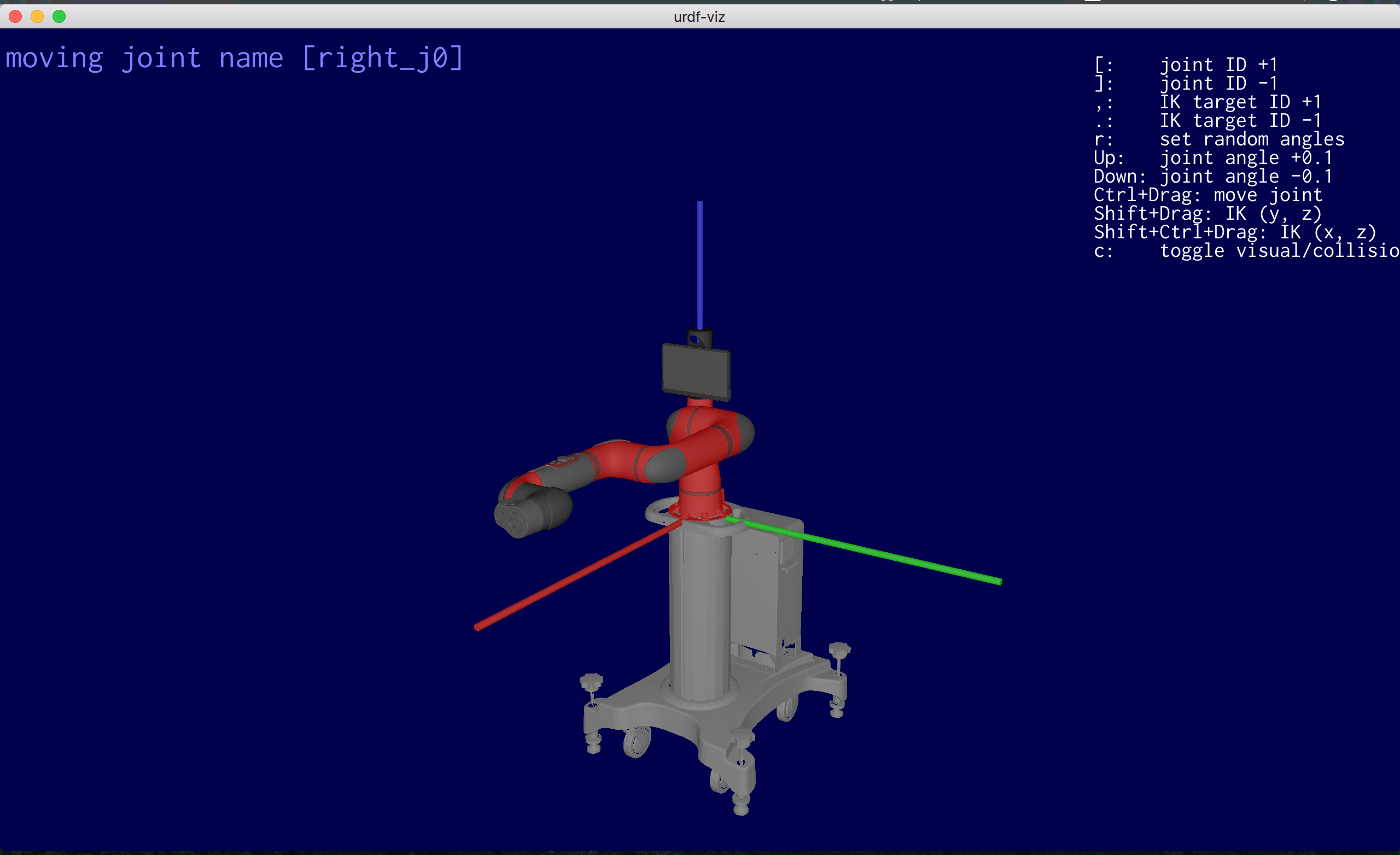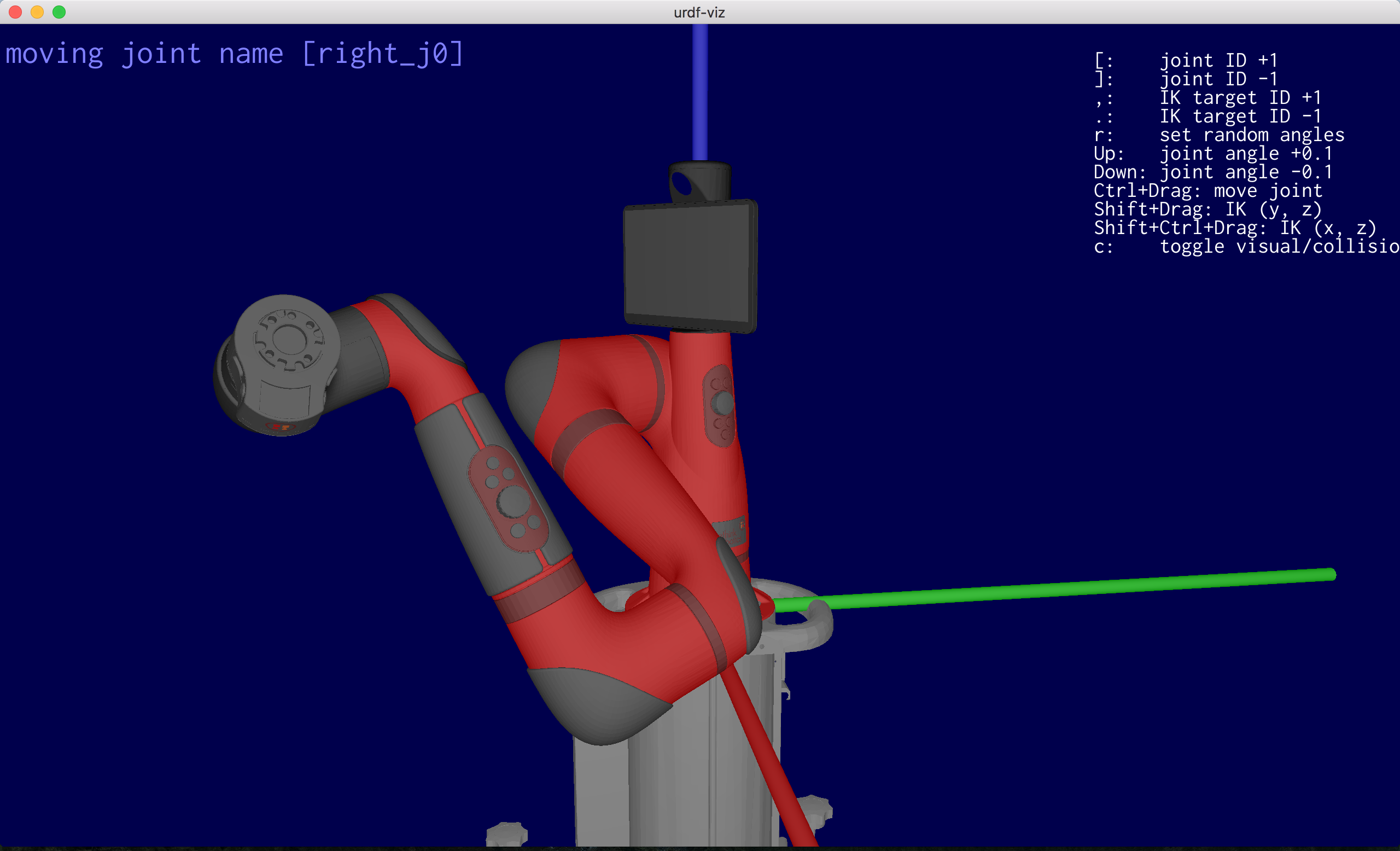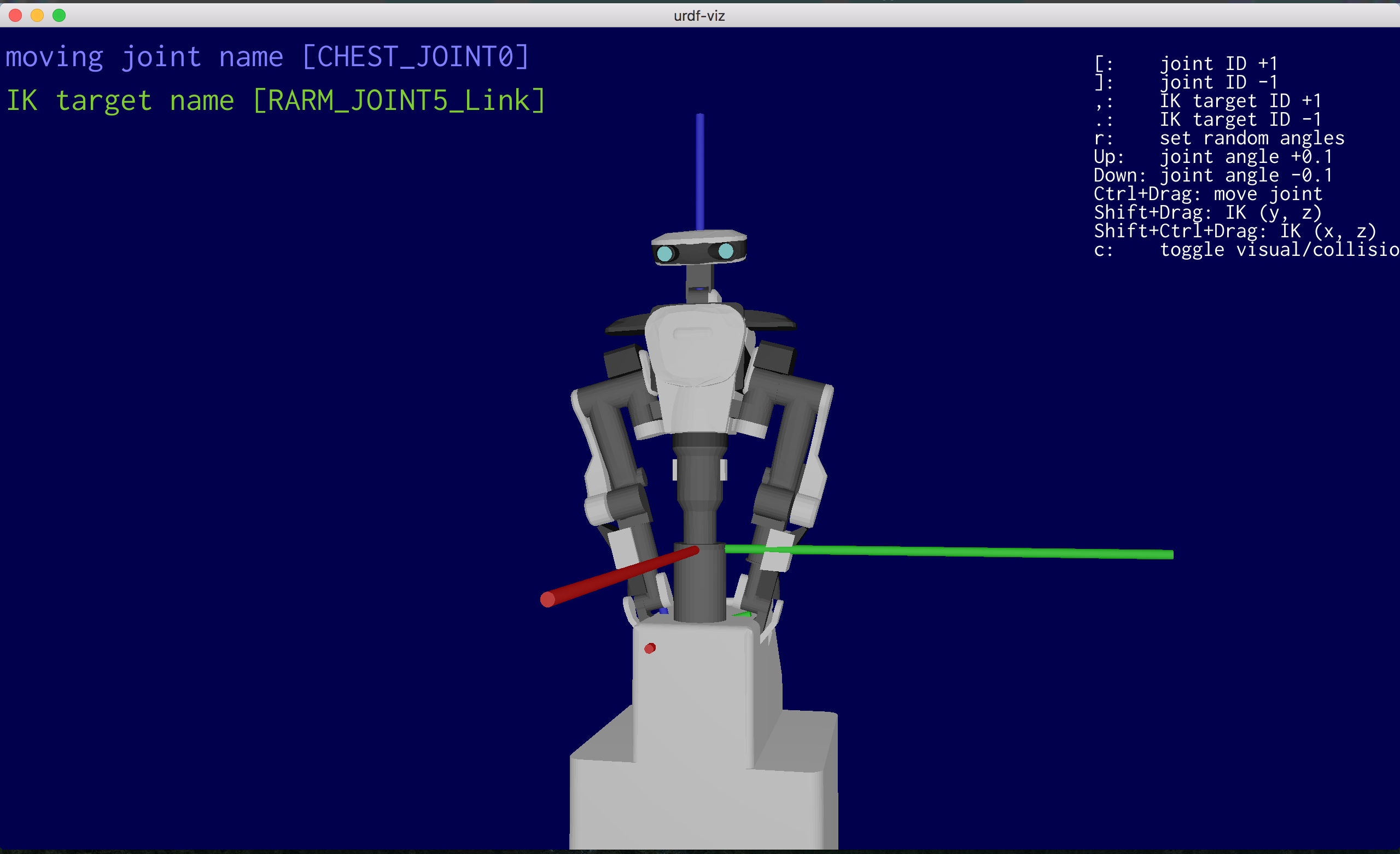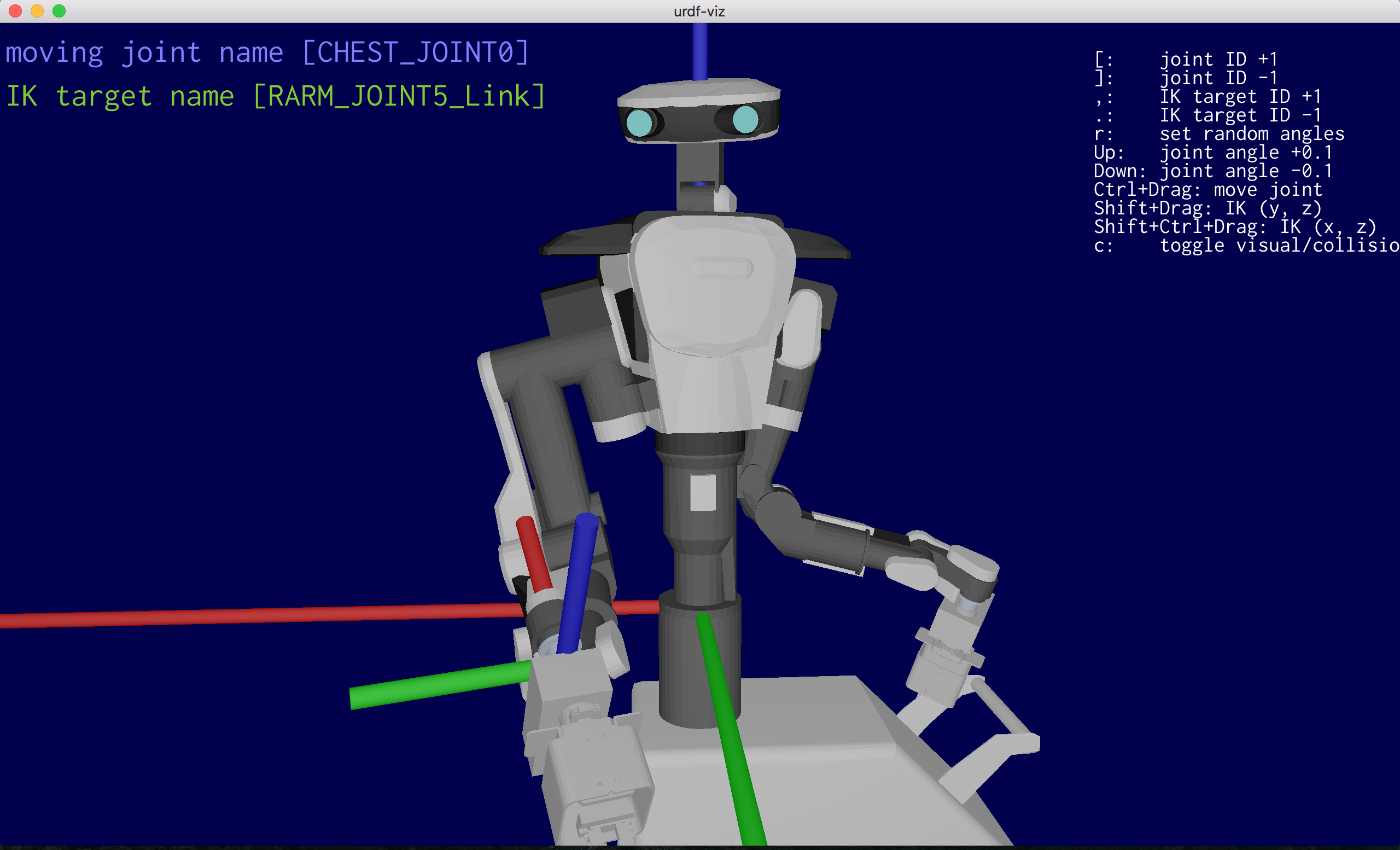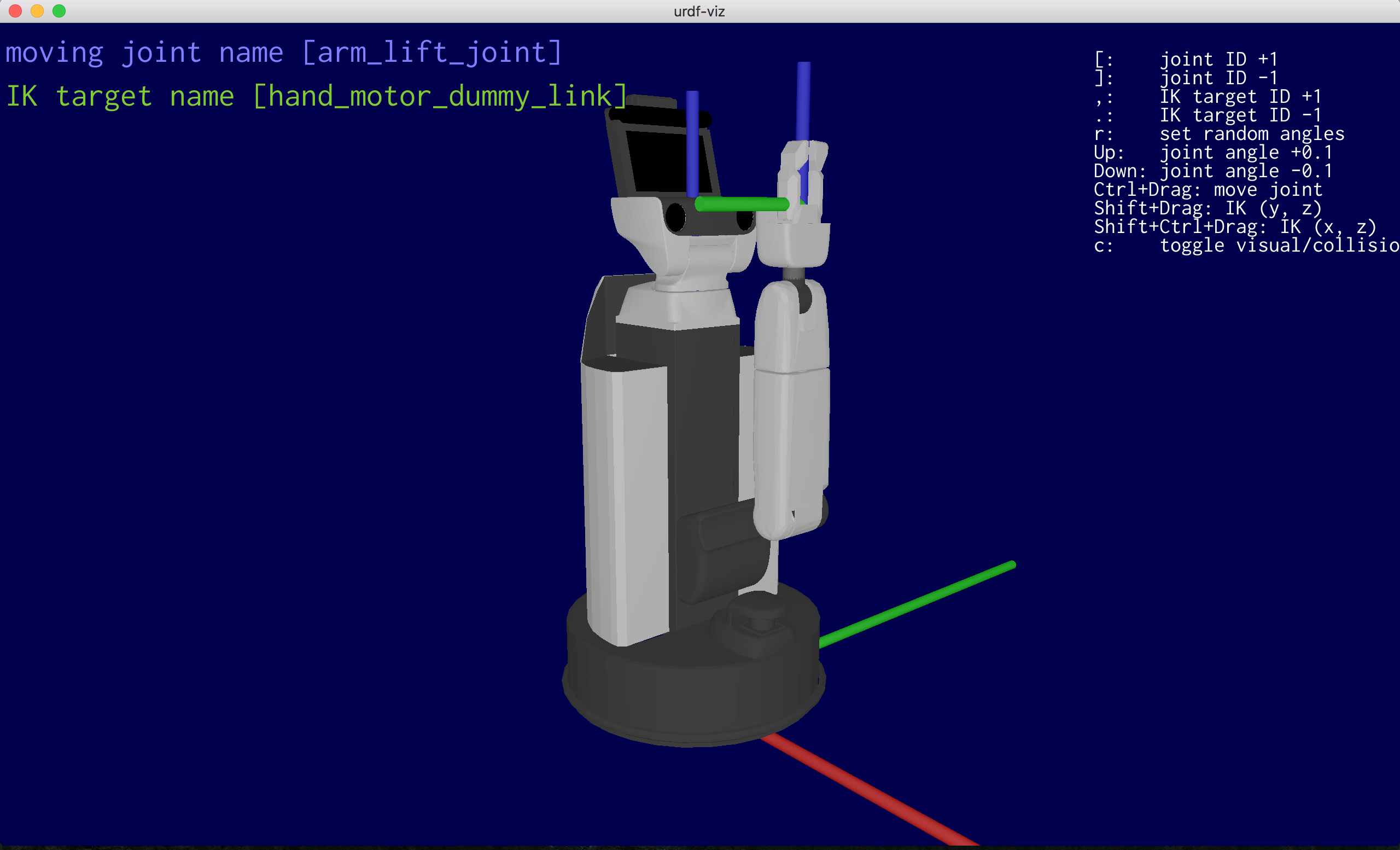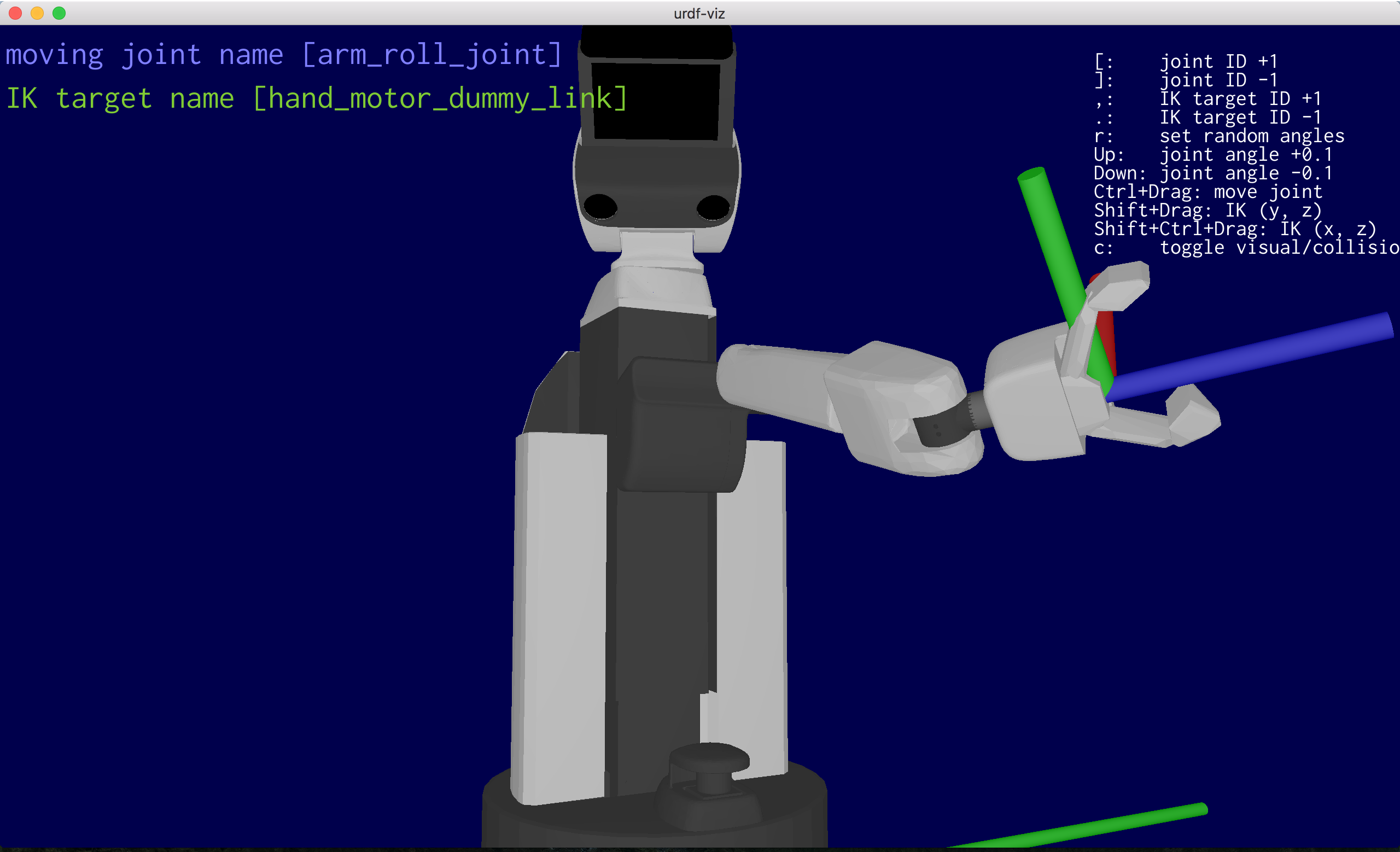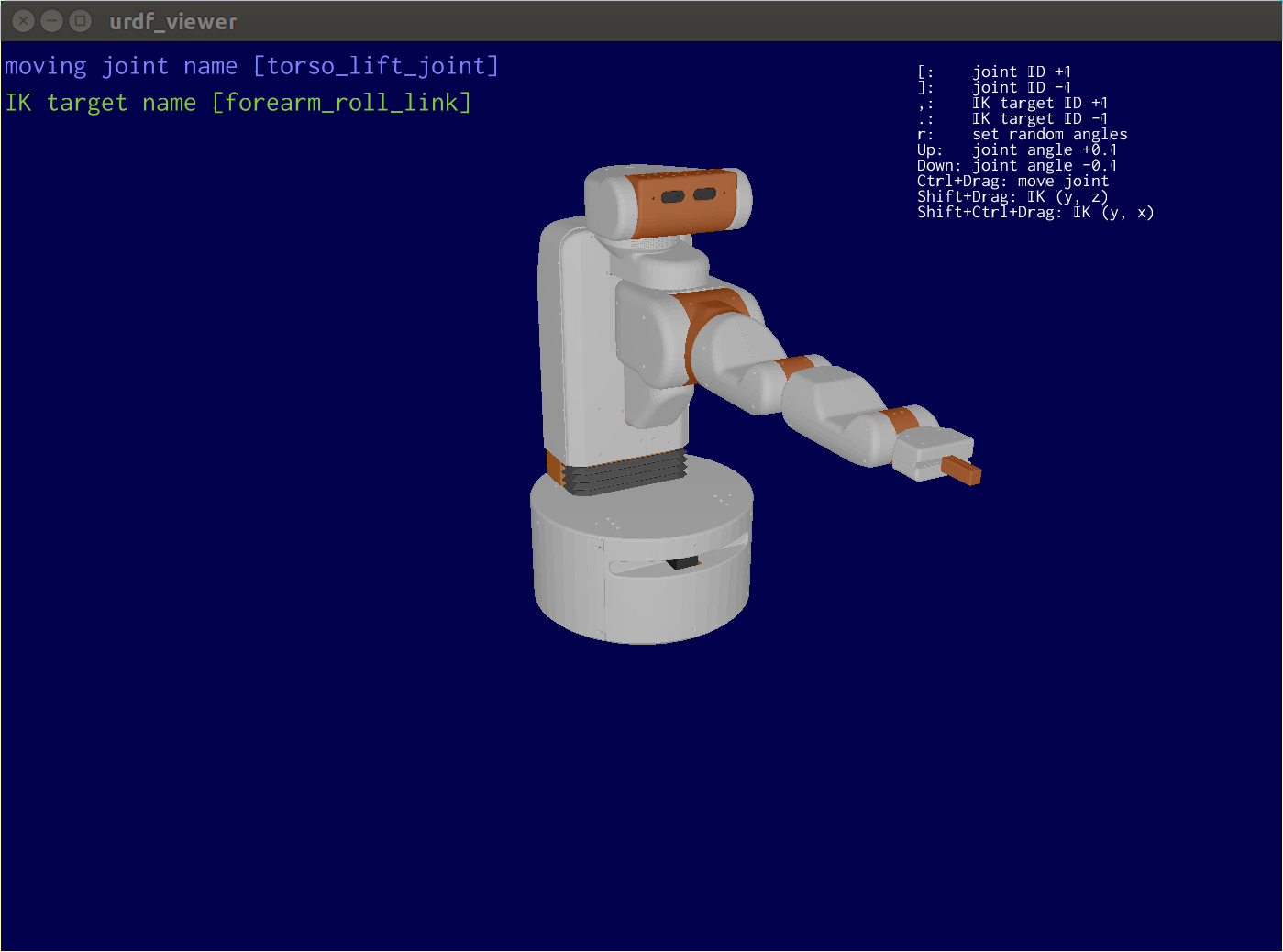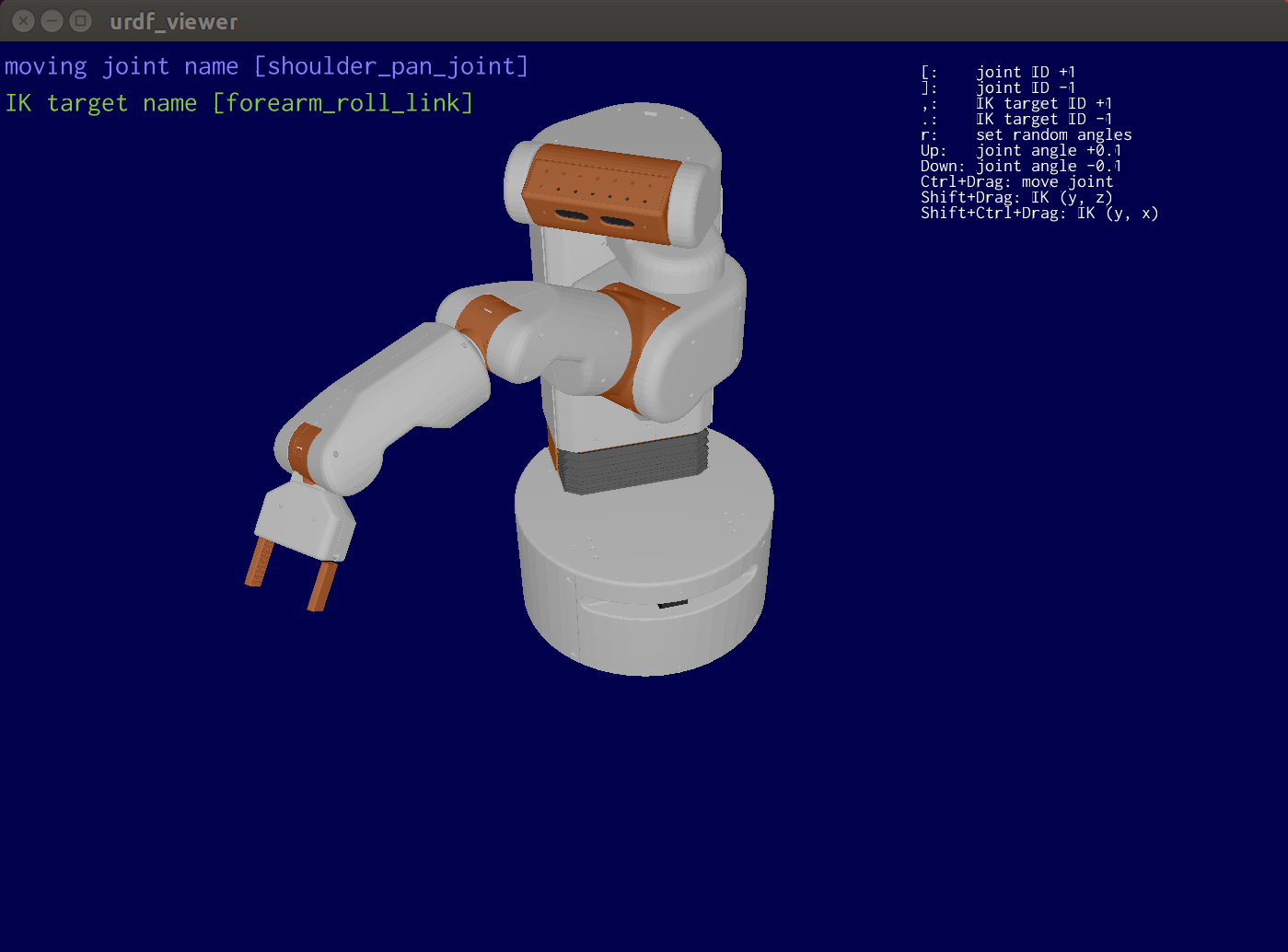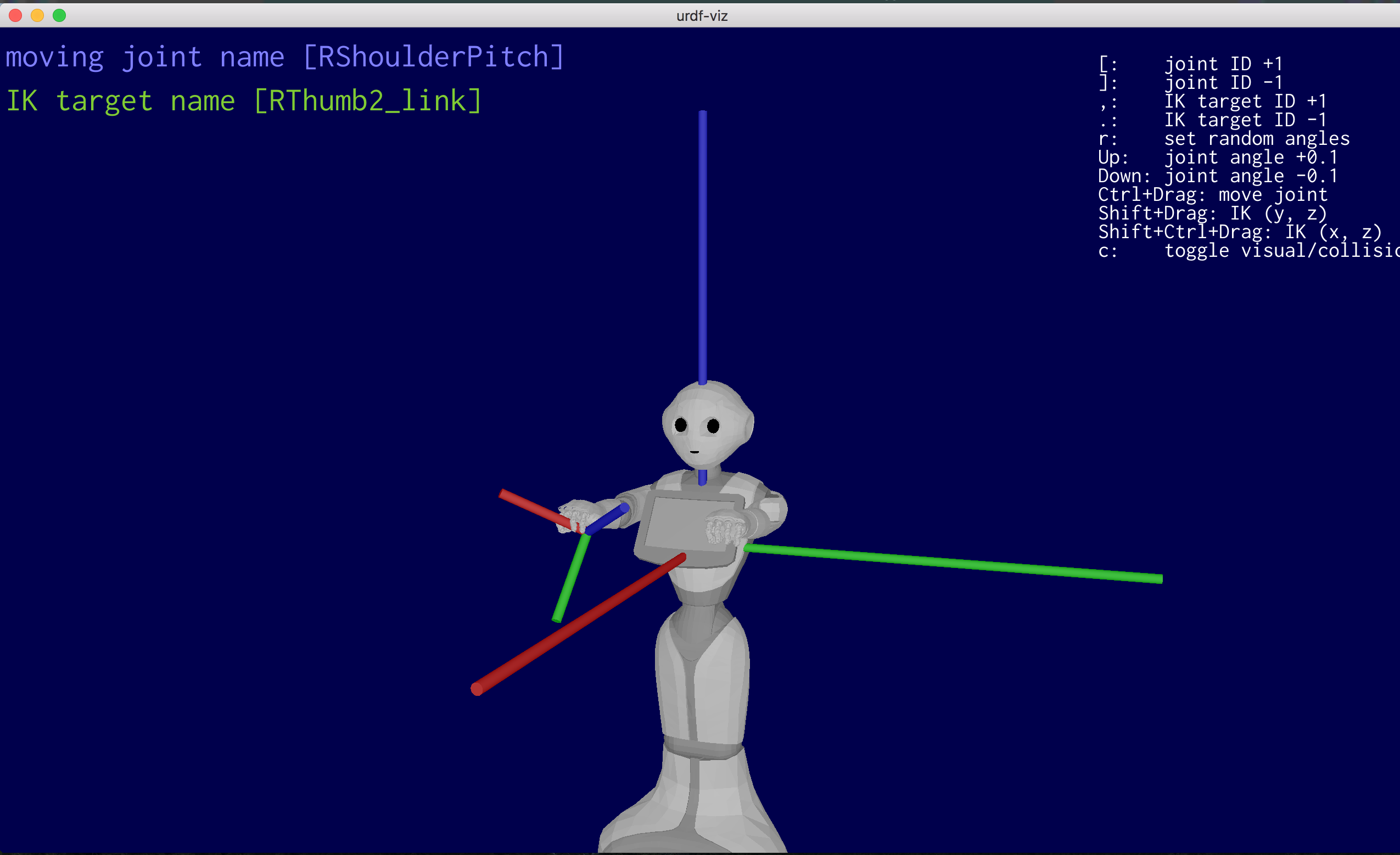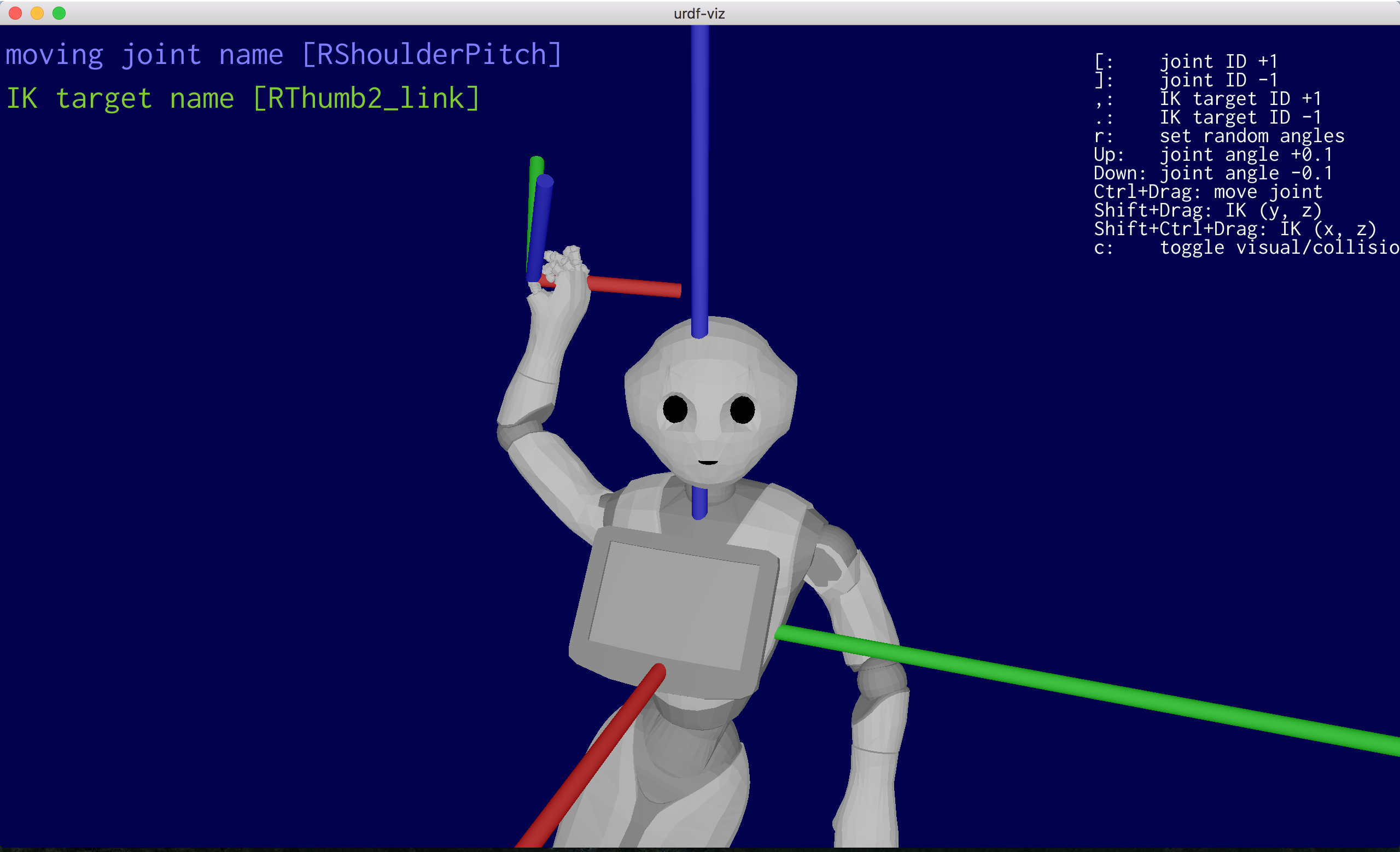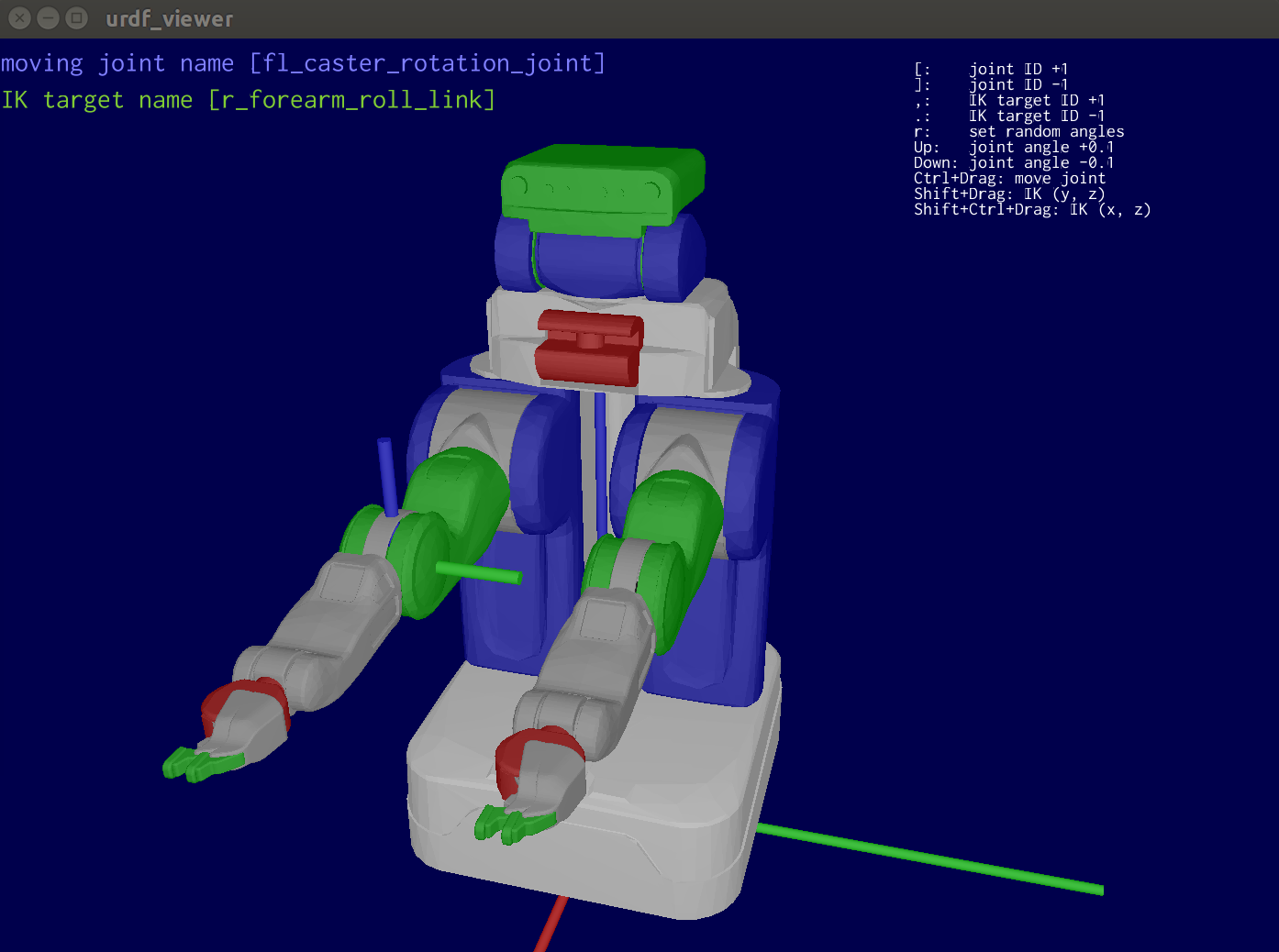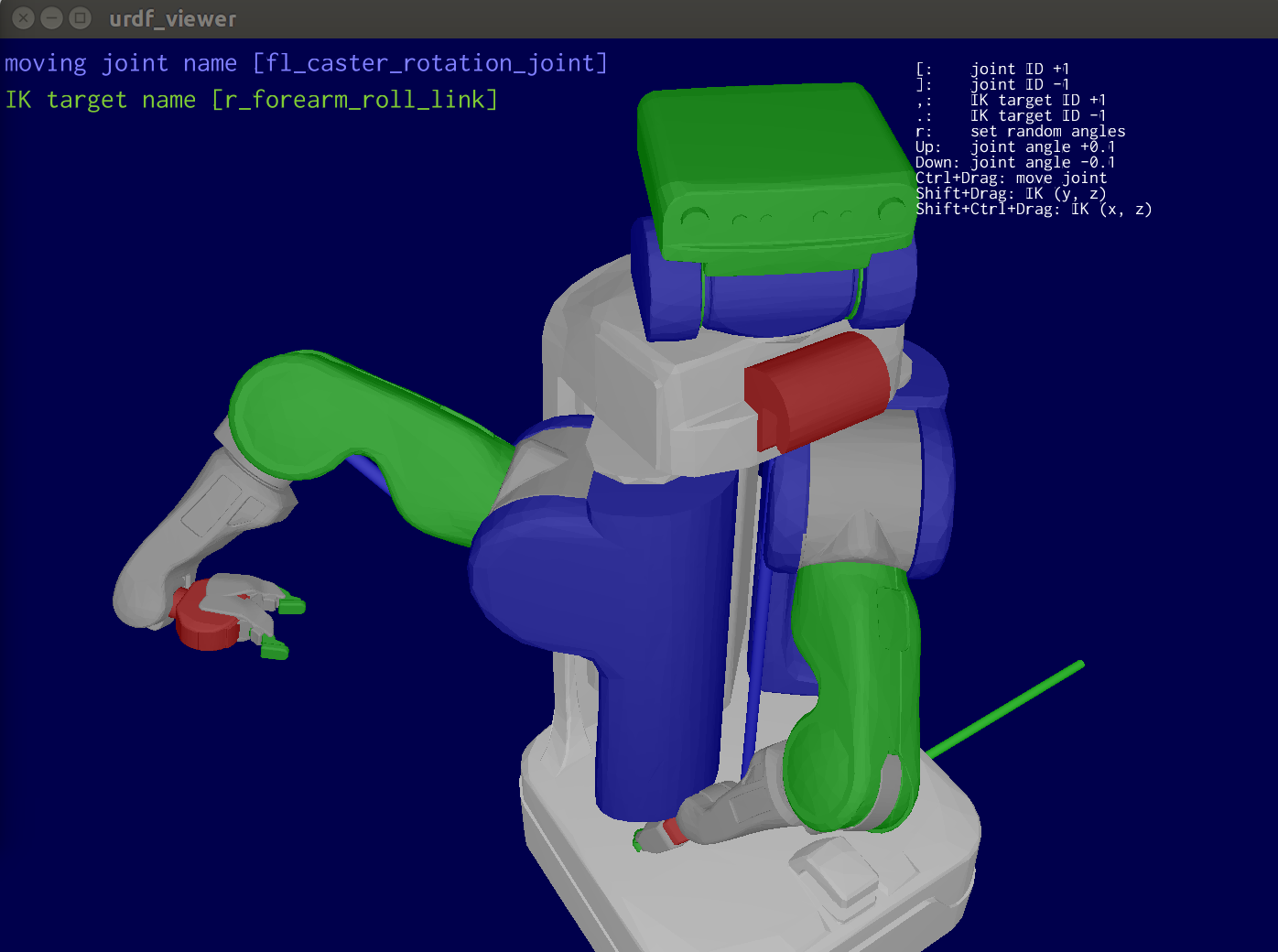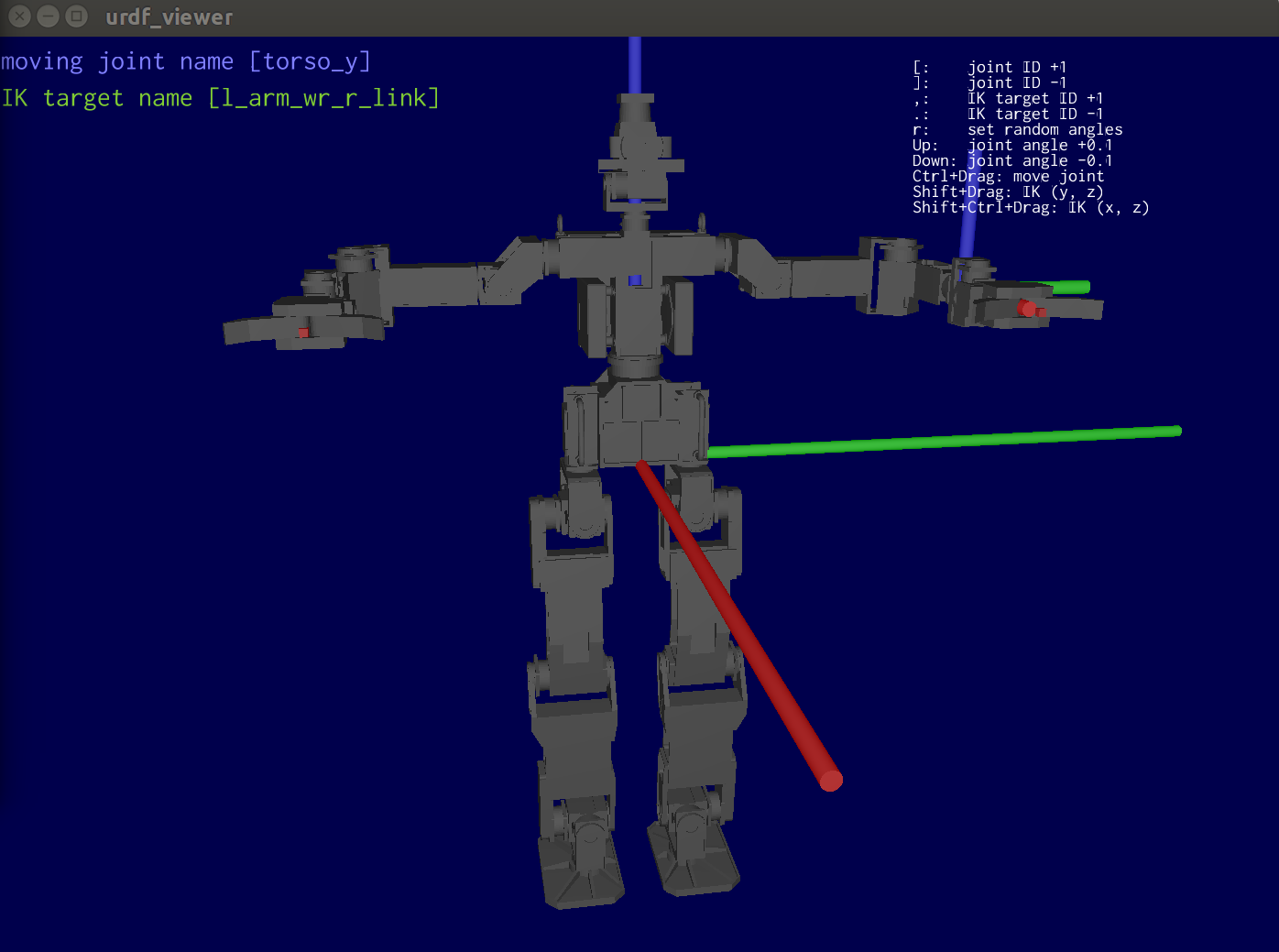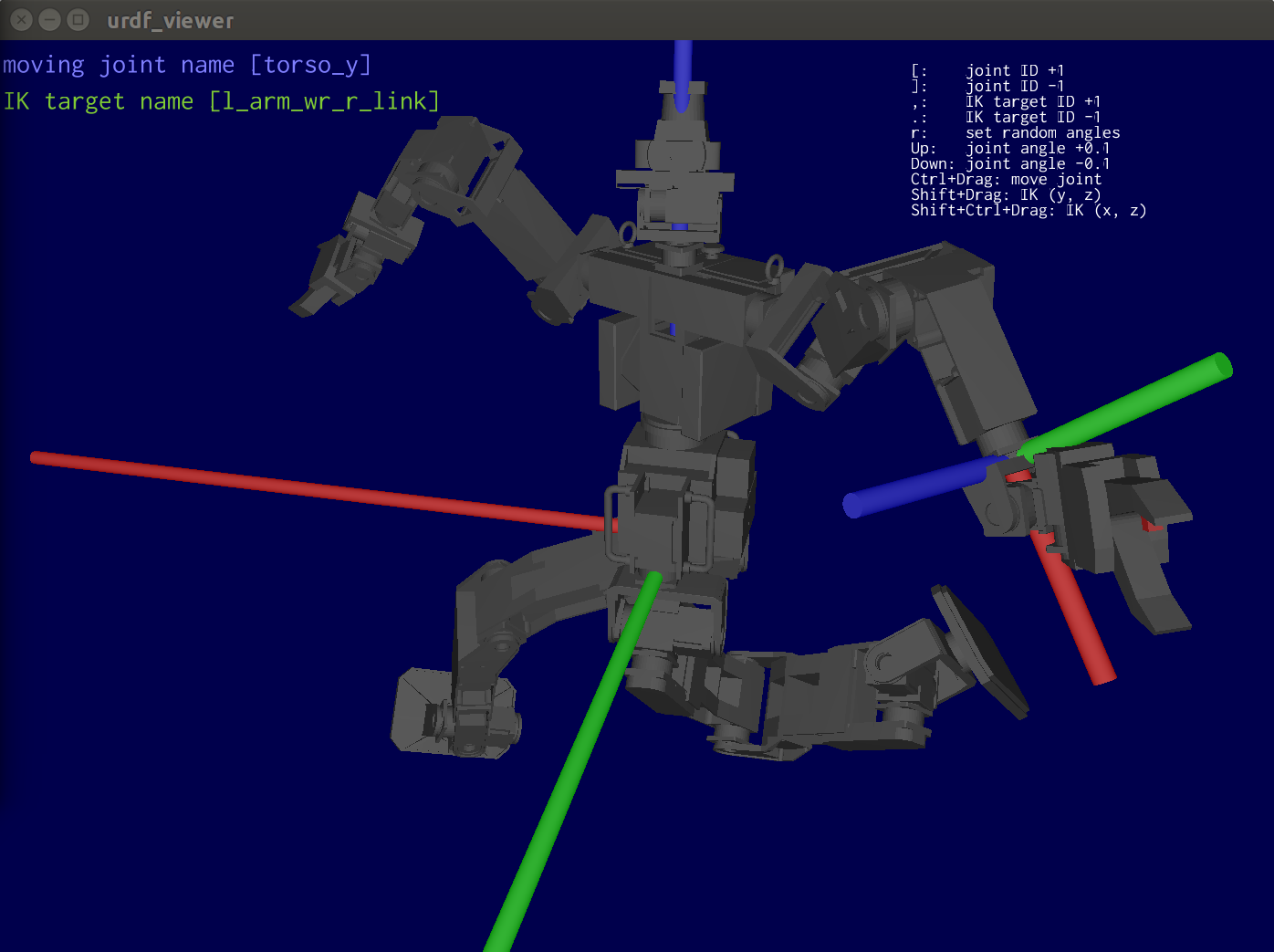Visualize URDF(Unified Robot Description Format) file.
urdf-viz is written in Rust-lang.
If you are using rust-lang already and cargo is installed, you can install by cargo install.
cargo install urdf-vizIf you don't use mesh other than .obj, .stl, and .dae files, you can skip install
of assimp by disabling the assimp feature like below.
cargo install urdf-viz --no-default-featuresNote: When the assimp feature is disabled, materials are not fully supported yet.
You need cmake to use assimp (mesh loader).
It can be skipped if you use --no-default-features, but it will make it
fail to show mesh files other than .obj, .stl, and .dae.
If you have not installed ROS, you may need cmake, xorg-dev, glu to
compile assimp-sys and glfw-sys.
sudo apt-get install cmake xorg-dev libglu1-mesa-devYou need freetype.lib in your PATH, which is required by freetype-sys.
You can find binaries here
Install freetype by brew.
brew install freetypeYou can download prebuilt binaries from the release page. Prebuilt binaries are available for macOS, Linux, and Windows.
You can install urdf-viz using Homebrew tap on macOS and Linux:
brew install openrr/tap/urdf-vizurdf-viz command will be installed.
It needs rosrun and rospack to resolve package:// in <mesh> tag, and
it uses xacro to convert .xacro file into urdf file.
It means you need $ source ~/catkin_ws/devel/setup.bash or something before using urdf-viz.
urdf-viz URDF_FILE.urdfIt is possible to use xacro file directly.
It will be converted by rosrun xacro xacro inside of urdf-viz.
urdf-viz XACRO_FILE.urdf.xacroIf your xacro file has some arguments, you can pass them by --xacro-args option.
urdf-viz XACRO_FILE.urdf.xacro --xacro-args arg1=value arg2=valueFor other options, please read the output of -h option.
urdf-viz -hIf there are no "package://" in mesh tag, and don't use xacro you can skip install of ROS.
If there are "package://" in mesh tag, but path or URL to package is known and don't use xacro you can also skip install of ROS by replacing package with path or URL.
In the GUI, you can do some operations with keyboard and mouse.
lkey to reload the urdf from fileckey to toggle collision model or visual mode- Move a joint
- set the angle of a joint by
Up/Downkey Ctrl+ Drag to move the angle of a joint- change the joint to be moved by
o([) andp(])
- set the angle of a joint by
- Inverse kinematics (only positions)
Shift+ Drag to use inverse kinematics(Y and Z axis)Shift+Ctrl+ Drag to use inverse kinematics(X and Z axis)- change the move target for inverse kinematics by
,or.
rkey to set random jointszkey to reset joint positions and origin- Move view point
- Mouse Right Drag to translate view camera position
- Mouse Left Drag to look around
- Scroll to zoom in/out
You can set/get the joint angles using http/JSON.
Default port number is 7777. You can change it by -p option.
(jq is used for JSON formatter in the following examples)
POST the JSON data, which format is like below. You have to specify the names of joints and positions (angles).
The length of names and positions have to be the same. You don't need write
all joint names, it means you can specify a part of the joints.
{
"names": ["joint_name1", "joint_name2"],
"positions": [0.5, -0.1]
}You can try it using curl.
$ curl -H "Accept: application/json" -H "Content-type: application/json" -X POST -d '{"names": ["r_shoulder_yaw", "r_shoulder_pitch"], "positions": [0.8, -0.8]}' http://127.0.0.1:7777/set_joint_positions | jq
{
"is_ok": true,
"reason": ""
}The result JSON format of getting the joint angles is the same as the Set method.
$ curl http://127.0.0.1:7777/get_joint_positions | jq
{
"names": [
"r_shoulder_yaw",
"r_shoulder_pitch",
"r_shoulder_roll",
"r_elbow_pitch",
"r_wrist_yaw",
"r_wrist_pitch",
"l_shoulder_yaw",
"l_shoulder_pitch",
"l_shoulder_roll",
"l_elbow_pitch",
"l_wrist_yaw",
"l_wrist_pitch"
],
"positions": [
0.8,
-0.8,
-1.3447506,
-1.6683152,
-1.786362,
-1.0689334,
0.11638665,
-0.5987091,
0.7868867,
-0.027412653,
0.019940138,
-0.6975361
]
}$ curl -H "Accept: application/json" -H "Content-type: application/json" -X POST -d '{"position":[0.2,0.0,0.0],"quaternion":[0.0,0.0,0.0,1.0]}' http://127.0.0.1:7777/set_robot_origin
{"is_ok":true,"reason":""}The order of the quaternion elements is w, i, j, k.
$ curl http://127.0.0.1:7777/get_robot_origin
{"position":[0.2,0.0,0.0],"quaternion":[1.0,0.0,0.0,0.0]}curl http://127.0.0.1:7777/get_urdf_text- kiss3d:
urdf-vizis strongly depend onkiss3d, which is super easy to use, great 3D graphic engine. - nalgebra: linear algebra library.
- k: kinematics library which is based on nalgebra. It can load URDF files using
urdf-rs. - assimp-rs: assimp rust interface.
kiss3dsupports.objfiles natively, but urdf containsdaeorstlfiles. These files are converted to kiss3d mesh model byassimp-rs - urdf-rs: URDF file loader.
- structopt: super easy command line arguments parser.
Here is a discord server for OpenRR users and developers.


